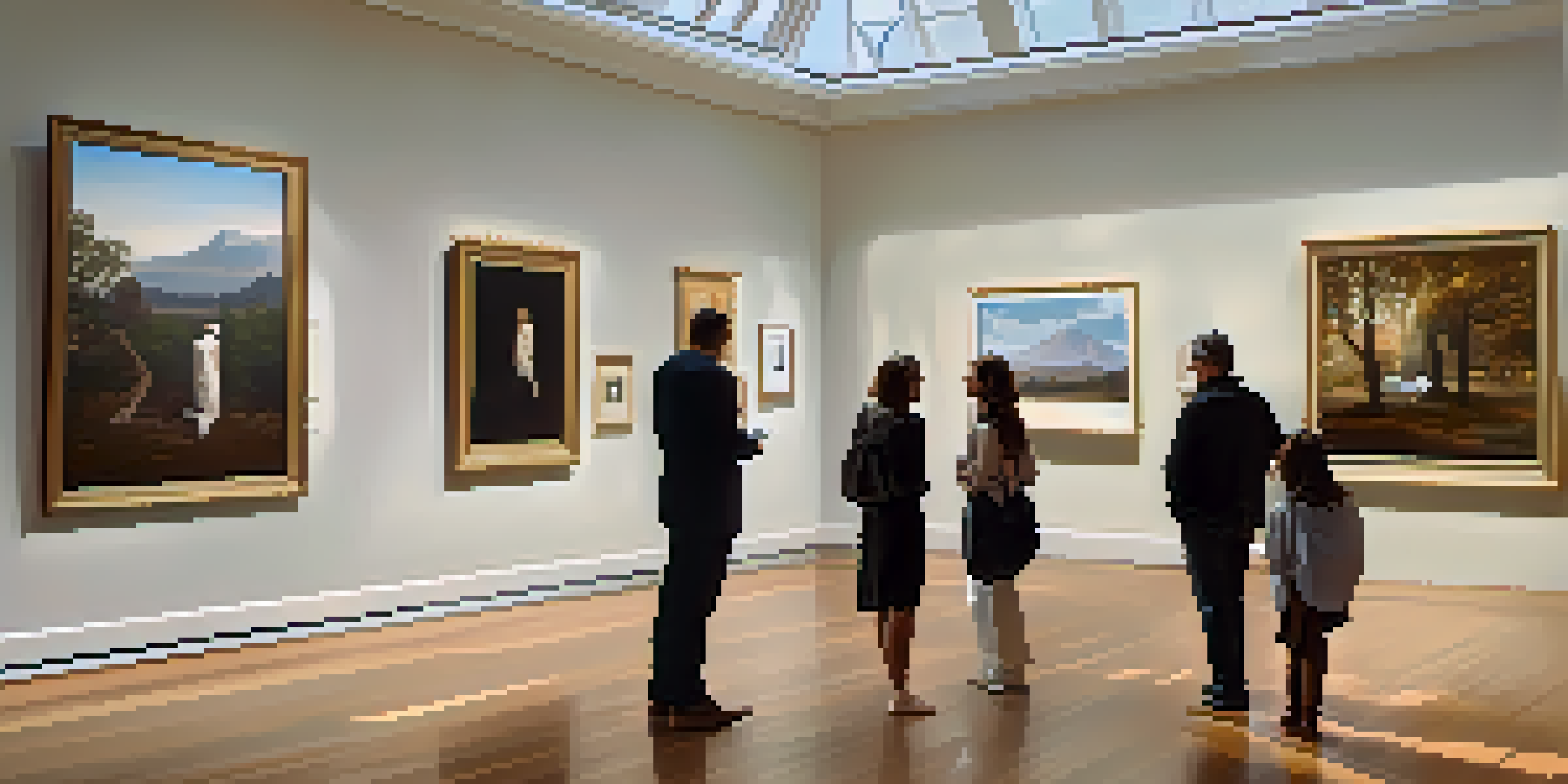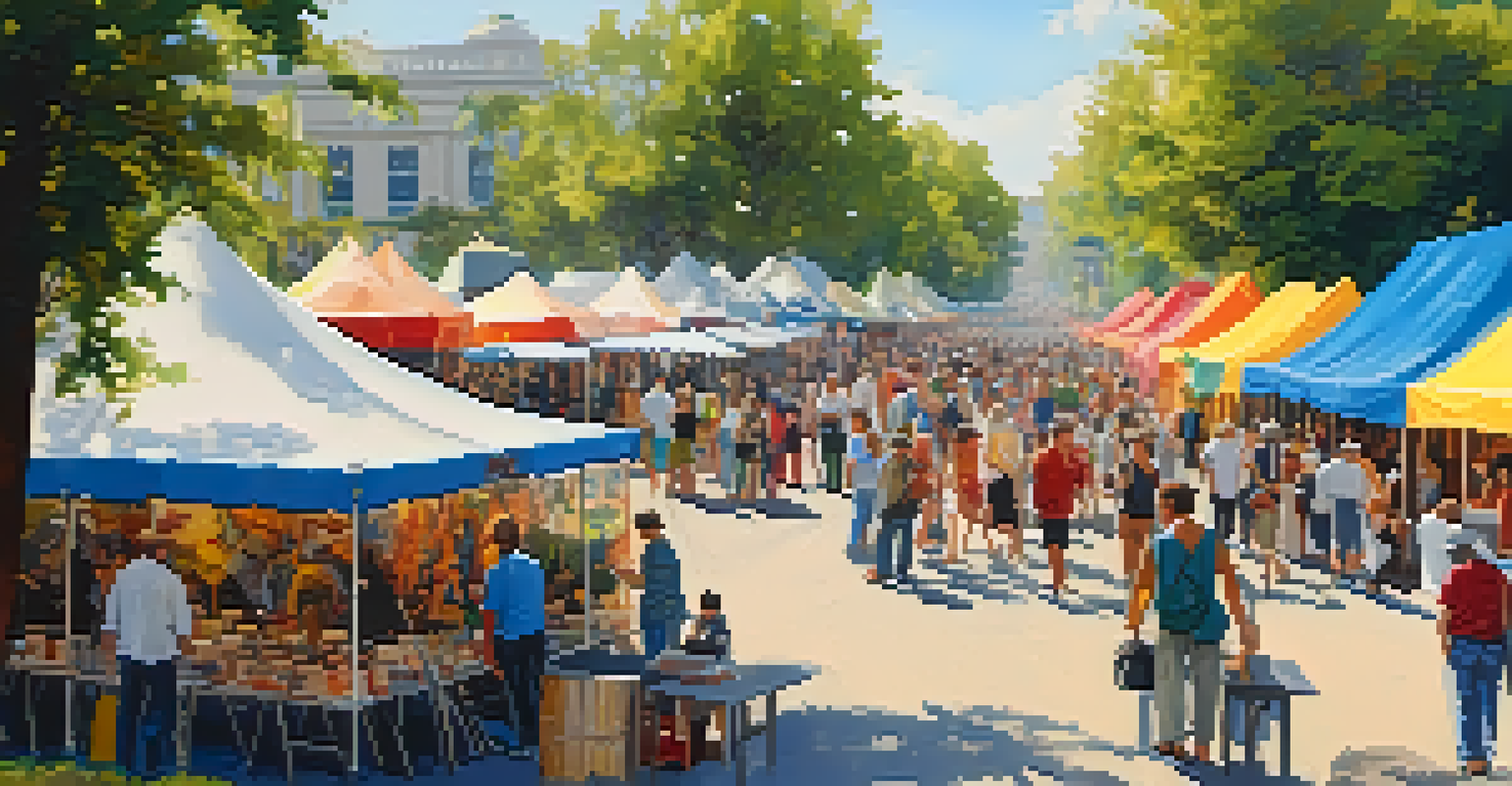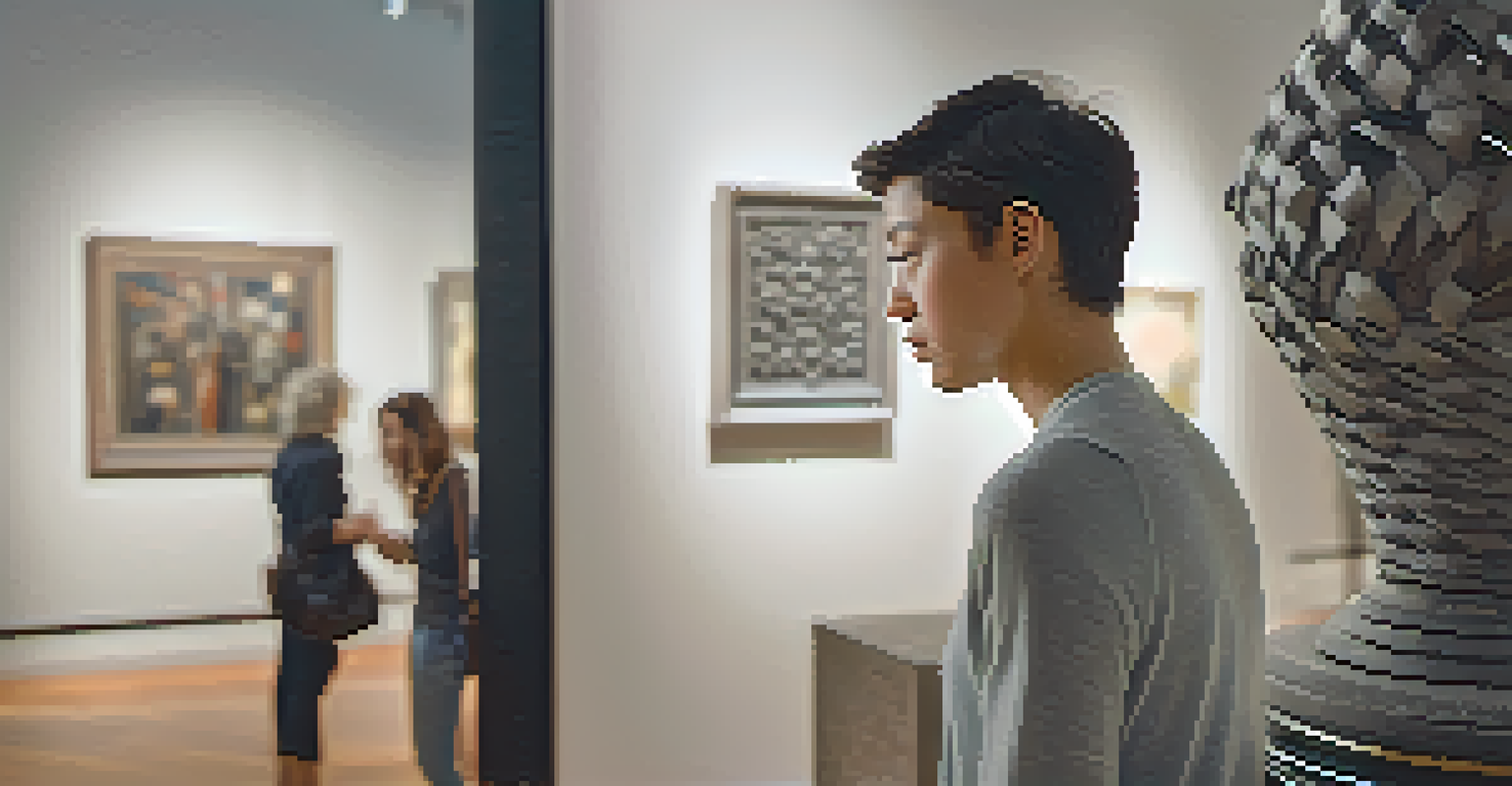The Role of Art Patrons in Supporting the Marketplace

Understanding the Role of Art Patrons in the Marketplace
Art patrons are individuals or organizations that provide financial support to artists, galleries, and arts organizations. They play a crucial role in the art marketplace by funding projects, facilitating exhibitions, and acquiring artwork. This support not only helps artists create but also enriches the cultural landscape of communities.
Patrons are essential to the art world; they are the ones who provide the financial backbone that allows artists to flourish.
While the term 'patron' may evoke images of wealthy collectors buying expensive pieces, the reality is more nuanced. Patrons can range from private collectors to corporate sponsors, each contributing in their unique way. Their involvement often leads to the discovery of emerging artists and innovative art forms, expanding the marketplace's diversity.
Moreover, art patrons often serve as advocates for artists, helping to elevate their profiles and connect them with broader audiences. This relationship between patrons and artists fosters a thriving art community, ultimately benefiting the entire marketplace.
The Financial Impact of Art Patrons on Artists
One of the most significant ways patrons influence the art marketplace is through financial support. Many artists rely on grants and donations to fund their creative projects, allowing them to focus on their art rather than financial struggles. This support can make a world of difference, enabling artists to take risks and push boundaries.

Additionally, patrons often purchase artworks directly from artists, providing them with much-needed revenue. This direct sale not only supports artists financially but also validates their work in a competitive marketplace. When patrons invest in an artist's vision, it can lead to increased demand and higher prices for their art.
Patrons Support Artists Financially
Art patrons provide essential funding that allows artists to focus on their creative projects and thrive in the marketplace.
Furthermore, financial backing from patrons can help artists reach audiences they may not have accessed otherwise. By sponsoring exhibitions or art fairs, patrons can elevate an artist’s visibility, leading to new opportunities and a more sustainable career.
Patrons as Curators: Shaping Art Trends and Movements
Art patrons often take on the role of curators, influencing which artists and styles gain traction in the marketplace. Their tastes and preferences can shape trends, creating ripples throughout the art world. When a well-known patron supports a specific artist or movement, it can attract attention and generate interest from collectors and galleries alike.
Art is not freedom from discipline, but disciplined freedom.
For instance, the rise of contemporary art can be largely attributed to the support of influential patrons who championed innovative artists. Their willingness to invest in new ideas has opened doors for diverse forms of expression, helping to redefine what art can be.
In this way, patrons not only provide funding but also help curate the cultural narrative around art. Their choices can elevate certain genres, leading to a richer and more varied art marketplace that reflects a wider range of perspectives.
The Relationship Between Patrons and Galleries
Art galleries often rely on patrons for support, creating a symbiotic relationship that benefits both parties. Patrons may help galleries acquire new works or sponsor exhibitions, enhancing the gallery’s offerings and drawing in new visitors. This collaboration can also increase sales for both the gallery and the artists represented.
Moreover, patrons frequently serve as ambassadors for galleries, introducing their networks to new artists and exhibitions. This not only bolsters the gallery’s reputation but also helps foster a community of art supporters and collectors. When patrons champion a gallery, it can create a ripple effect, attracting even more patrons and collectors.
Patrons Shape Art Trends
Through their tastes and investments, art patrons influence which styles and artists gain prominence, fostering a diverse art landscape.
In essence, the relationship between patrons and galleries is vital for a thriving art marketplace. By working together, they can create dynamic exhibitions that engage audiences and promote the artists they represent.
Art Patrons and Cultural Institutions: A Vital Partnership
Art patrons often collaborate with cultural institutions like museums and art foundations, providing crucial funding for programs and exhibitions. This partnership is essential for the preservation and promotion of art, ensuring that diverse voices and narratives are represented. Without patrons, many institutions would struggle to sustain their operations and initiatives.
Through their support, patrons can help institutions present groundbreaking exhibitions that might otherwise go unfunded. This not only enriches the cultural experience for the public but also elevates the visibility of underrepresented artists and movements. Patrons play a key role in fostering a more inclusive art landscape.
Furthermore, these collaborations can lead to educational programs and outreach initiatives that engage wider audiences. By investing in cultural institutions, patrons help to nurture future generations of artists and art enthusiasts, ensuring the longevity and relevance of the art marketplace.
Challenges Faced by Art Patrons in the Marketplace
While the role of art patrons is vital, it is not without challenges. Many patrons face difficulties in choosing which artists or projects to support, given the vast array of options available. This decision-making process can be overwhelming, especially when considering the potential impact of their contributions.
Additionally, patrons must navigate the complexities of the art market, which can be volatile and unpredictable. Trends shift rapidly, and what is considered valuable today may not hold the same status tomorrow. This uncertainty can make it challenging for patrons to feel confident in their investments.
Collaboration with Cultural Institutions
Art patrons partner with museums and foundations, ensuring diverse narratives are represented and enriching the cultural experience for all.
Moreover, the expectations placed on patrons can sometimes be daunting. There is often pressure to support emerging artists or innovative projects, which can lead to a fear of making the wrong choice. However, many patrons find that trusting their instincts and passions ultimately leads to the most fulfilling partnerships.
The Future of Art Patronage in a Digital Age
As the art world evolves, so too does the role of art patrons. The rise of digital platforms has transformed how art is created, showcased, and sold. Patrons now have access to a global marketplace, allowing them to discover and support artists from diverse backgrounds and locations.
This digital shift also means that patrons can engage with artists and communities in new ways. Virtual exhibitions, social media, and online art fairs have created opportunities for direct interaction, fostering a sense of connection that was previously hard to achieve. Patrons can now witness the impact of their support in real-time.

Looking ahead, the future of art patronage will likely involve a blend of traditional and digital approaches. As patrons adapt to this changing landscape, they will continue to play a pivotal role in shaping the art marketplace, ensuring that it remains vibrant, diverse, and accessible.